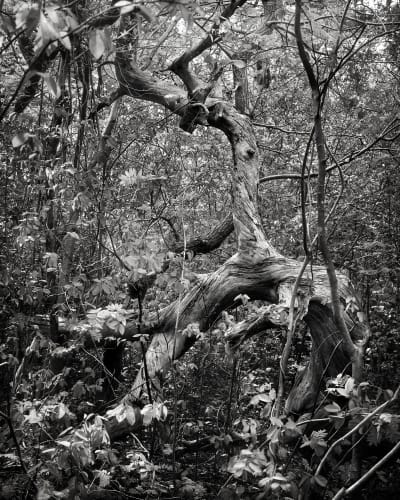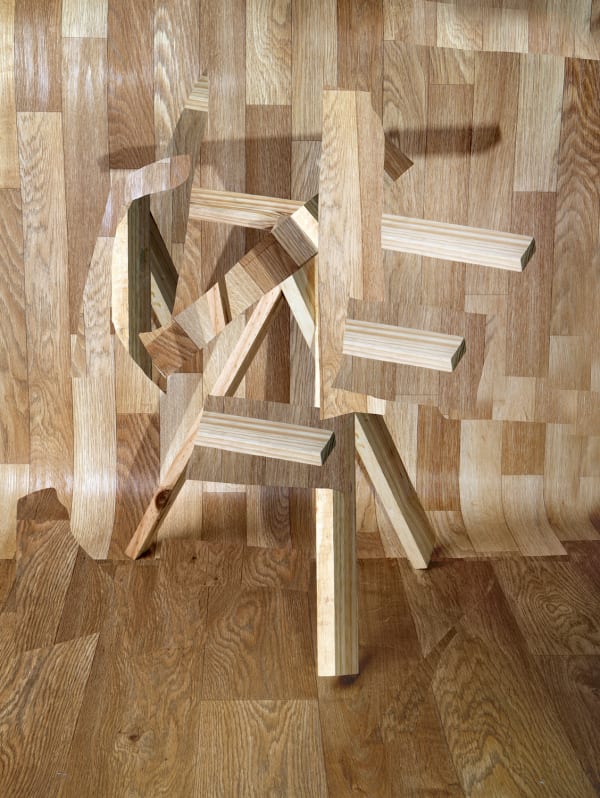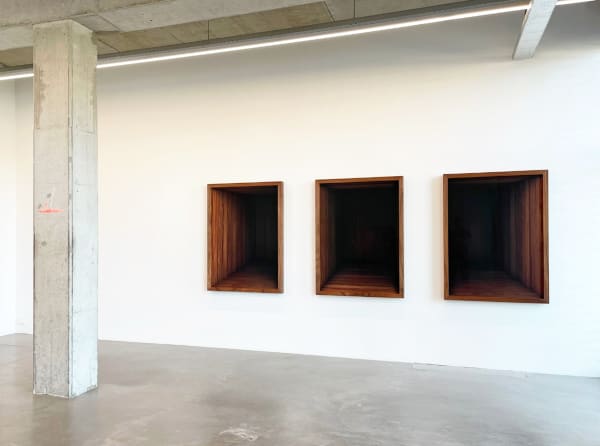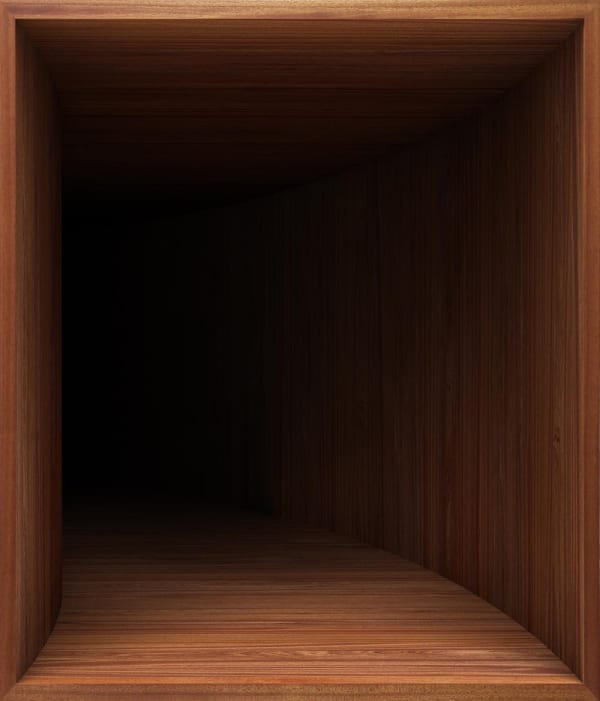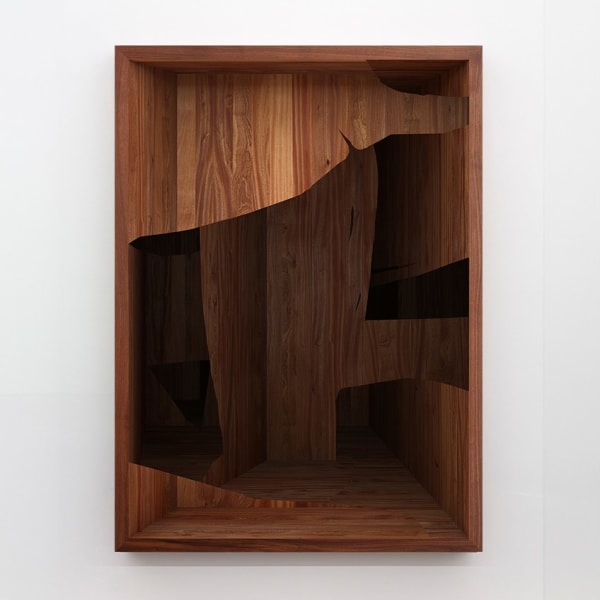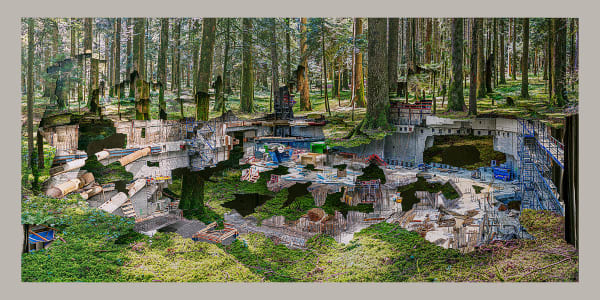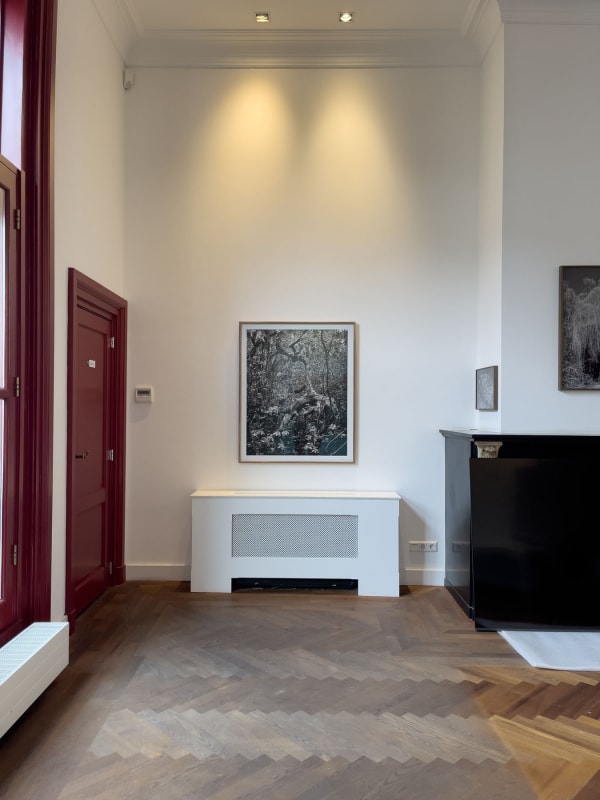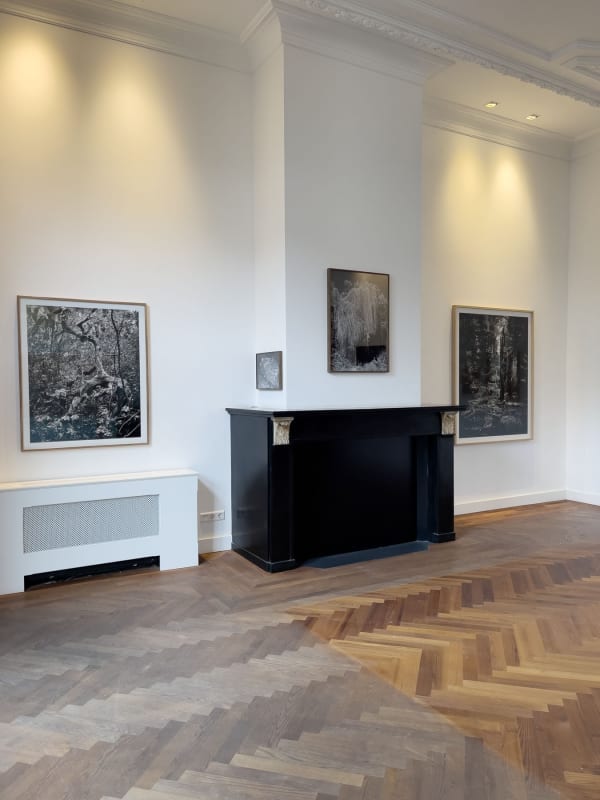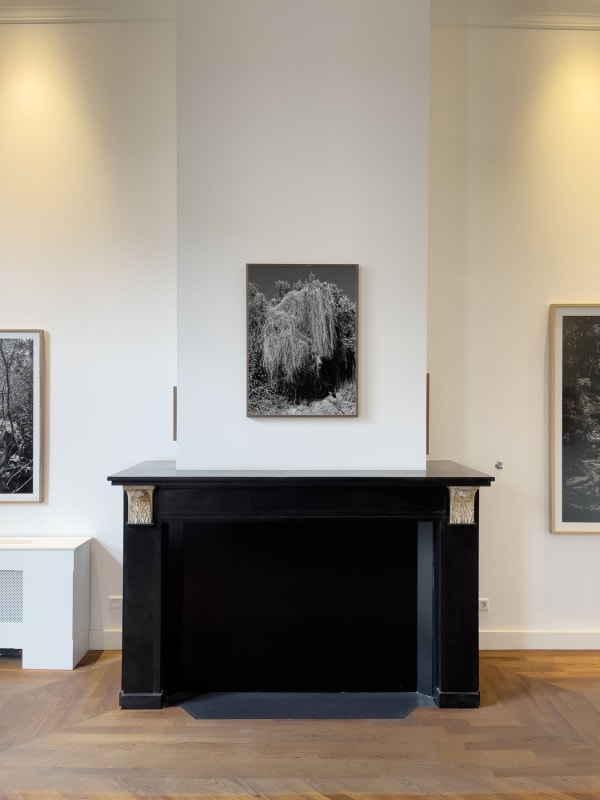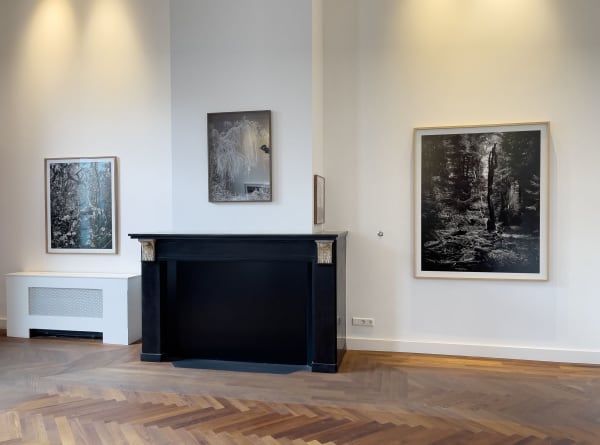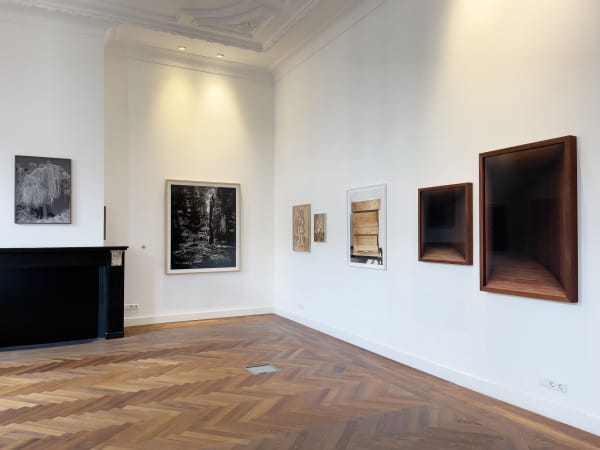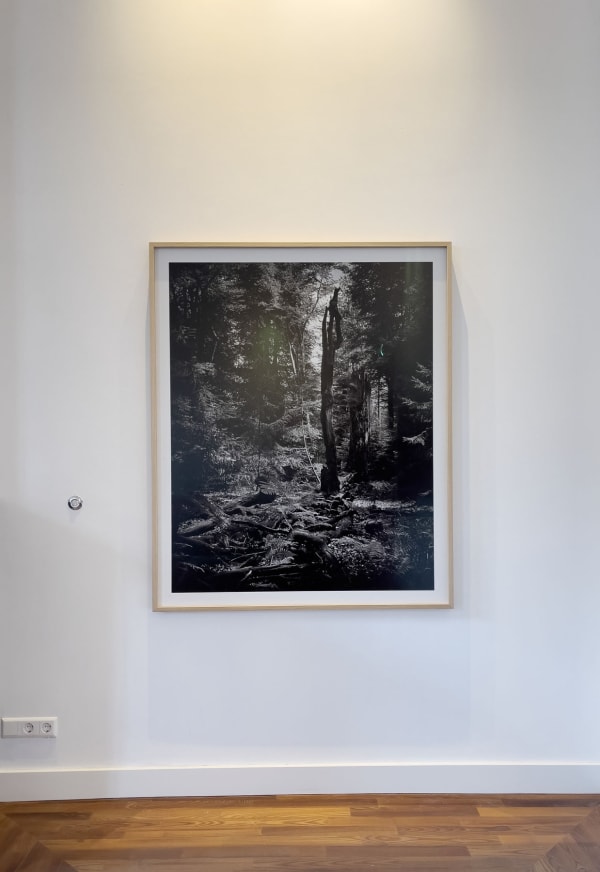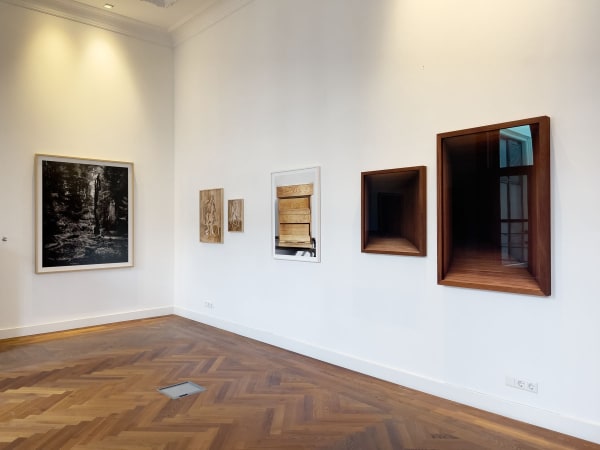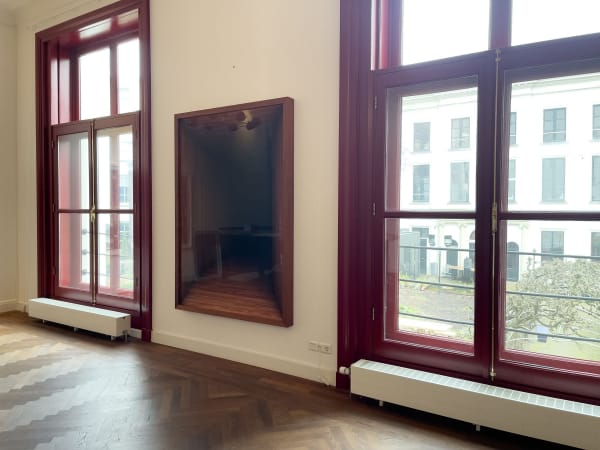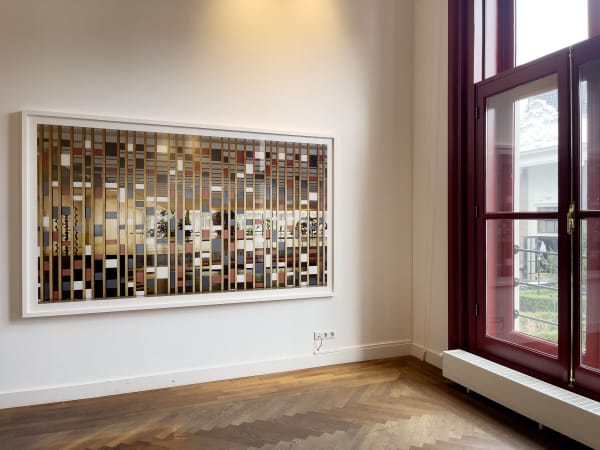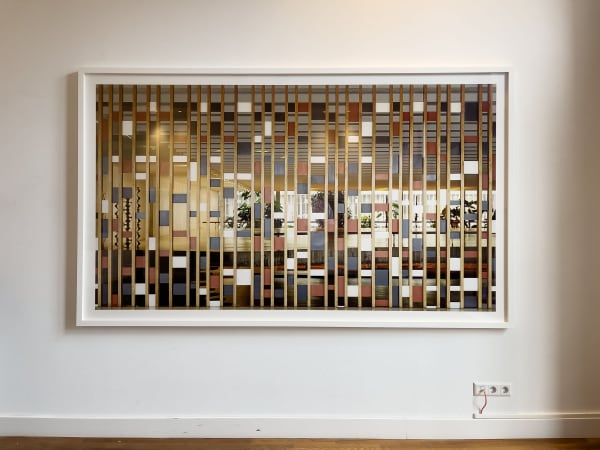'Against the Grain': Groupshow with Theis Wendt, Nico Krijno, Scheltens & Abbenes, Mark Nettenbreijers, Michel Lamoller and Vincent Fournier
In the gnarled branches of an ancient forest, or glossy, digital abstractions of timber’s processed surfaces, Against the Grain groups six contemporary artists whose varied wooden worlds shift the dial in new directions, exposing a changing relationship between the organic and the artificial.
For centuries, the forest has served as a twilight zone for artists – a realm of possibility and a site of transformation, a source of raw materials or subject matter in its own right. In photographic history, incursions into nature’s wooded depths are a well-trodden creative path, while close observations of plant life are synonymous with the medium’s origins. From William Henry Fox Talbot’s The Pencil of Nature andAnna Atkins’ cyanotypes to Karl Blossfeldt’s timeless botanical studies, nature’s bounty has long been a source of artistic inquiry – and photography has long sought to capture, classify, and reimagine its many forms.
In the gnarled branches of an ancient forest, or glossy, digital abstractions of timber’s processed surfaces, Against the Grain groups six contemporary artists whose varied wooden worlds shift the dial in new directions, exposing a changing relationship between the organic and the artificial.
In Theis Wendt’s Void works images and objects dissolve into one another: his photographic prints borrow textures from the wooden frames in which they are housed, creating a hypnotic optical trick. Wendt’s practice – spanning sculpture, installation, and post-photography – questions our relationship to nature in a digital era. As authenticity becomes increasingly elusive, Wendt’s project invites our gaze into the darkness, reminding us of how perception is shaped by literal and metaphorical structures that frame our world.
South African artist Nico Krijno is equally interested in toying with viewers’ perceptions. His seemingly digitally altered images often exist as pure sculptural improvisations before being reimagined through photography. Using discarded materials, including scraps of wood and repurposed timber, Krijno constructs ephemeral sculptures: forms are stacked, deconstructed, and reimagined, creating a dynamic visual language that resists stability. Here, Krijno’s studies of wood take on a kaleidoscopic effect, distorting our expectations of material and surface.
With their signature playful style, the Dutch artistic duo Scheltens & Abbenes contribute several studies of wooden beehives, originally shot for The Plant Magazine. Known for their still-life compositions that hover between applied and autonomous photography, they approach their subject with an architect’s eye; embracing photography’s capacity for illusion by folding spatial dimensions into flat yet painterly surfaces.
In his work, Mark Nettenbreijers takes us deep into the woods, where his black-and-white photographs capture the stark beauty of forest landscapes. His Rise & Fall series is a meditative study of woodland compositions, with twisted branches set against uniform rows of trees, illuminated by fleeting shifts of light. At the intersection of observation and abstraction, Nettenbreijer’s work points to nature’s inherent patterns and its unpredictability; despite its apparent solidity, the forest is an ever-changing entity shaped by time, weather, and human intervention.
Elsewhere, Michel Lamoller extends photography into three dimensions, layering large-scale prints – with sections cut away from each – to create sculptural depth. In this instance, his works juxtapose images of forests with those of urban construction; looking down through the layers, an impression emerges that man’s inescapable imprint lurks beneath the forest’s surfaces. Lamoller’s work echoes a larger reality: studies estimate that anthropogenic mass (the total weight of human-made materials) now exceeds the planet’s natural biomass. His layered compositions ask how much true wilderness remains, blurring the lines between nature and artifice.
Completing the exhibition is Vincent Fournier’s 2012 work, The Itamaraty Palace – Foreign Relations Ministry, a monumental study of modernist architecture in Brasilia: a city built as a vision of the future. Fournier’s practice often orbits utopian endeavors – of space exploration, robotics, and imagined futures. In this work, he examines how natural materials are repurposed and mobilized within a vision of national identity.
For more information on the featured artists, or to receive images, please get in touch with the gallery at jasper@theravestijngallery.com.
A special thank you to Nedstar for hosting this exhibition!
OPENING:
Thursday, 20 February 2025 / 5:00 - 8:00 PM
OPEN HOUSE:
Friday, 21 February 2025 / 12:00 AM - 7:00 PM
Saturday, 22 February 2025 / 12:00 AM - 7:00 PM
Sunday 23 February 2025 / 12:00 AM - 5:00 PM
LOCATION:
Nedstar / Herengracht 477 / 1017 BS Amsterdam
-
 Mark Nettenbreijers, Rise & Fall VII, 2013
Mark Nettenbreijers, Rise & Fall VII, 2013 -
 Mark Nettenbreijers, Rise & Fall III, 2013
Mark Nettenbreijers, Rise & Fall III, 2013 -
 Mark Nettenbreijers, Rise & Fall XVII, 2013
Mark Nettenbreijers, Rise & Fall XVII, 2013 -
 Nico Krijno, Dodder, 2017
Nico Krijno, Dodder, 2017 -
 Nico Krijno, Fallen Pine numbered, 2016
Nico Krijno, Fallen Pine numbered, 2016 -
 Nico Krijno, Form Study 4, 2014
Nico Krijno, Form Study 4, 2014 -
 Nico Krijno, Composition with Ink and Wood, 2014
Nico Krijno, Composition with Ink and Wood, 2014 -
 Nico Krijno, Veneer Wood Wood 2, 2014
Nico Krijno, Veneer Wood Wood 2, 2014 -
 Nico Krijno, Untitled Wood on Wood, 2014
Nico Krijno, Untitled Wood on Wood, 2014 -
 Nico Krijno, Veneer with basket, 2015
Nico Krijno, Veneer with basket, 2015 -
 Nico Krijno, Veneer Wood Wood 1, 2014
Nico Krijno, Veneer Wood Wood 1, 2014 -
 Nico Krijno, Sculpture Study with Burnt Wood 02, 2016
Nico Krijno, Sculpture Study with Burnt Wood 02, 2016 -
 Nico Krijno, Composition with Old Wood, 2015
Nico Krijno, Composition with Old Wood, 2015 -
 Scheltens & Abbenes, Beehives: Wood, 2017
Scheltens & Abbenes, Beehives: Wood, 2017 -
 Theis Wendt, Void no. 7, 8 & 9, 2022
Theis Wendt, Void no. 7, 8 & 9, 2022 -
 Theis Wendt, Void no. 16, 2023
Theis Wendt, Void no. 16, 2023 -
 Theis Wendt, Void no. 14, 2023
Theis Wendt, Void no. 14, 2023 -
 Theis Wendt, Excavation no. 8, 2022
Theis Wendt, Excavation no. 8, 2022 -
 Michel Lamoller, Contemporary Nature 2, 2025
Michel Lamoller, Contemporary Nature 2, 2025 -
 Vincent Fournier, The Itamaraty Palace – Foreign Relations Ministry, wood and steel panel by Athos Bulcão, Brasília, 2012
Vincent Fournier, The Itamaraty Palace – Foreign Relations Ministry, wood and steel panel by Athos Bulcão, Brasília, 2012
